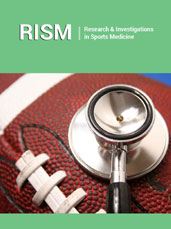- Submissions

Full Text
Research & Investigations in Sports Medicine
The Urgent Need for Climate-Resilient Strategies in Sports Medicine: Lessons from Recent Disasters in Southern Brazil
Weslley Barbosa Sales*
PhD student in physiotherapy, Federal University of Rio Grande do Norte (UFRN), Brazil
*Corresponding author:Weslley Barbosa Sales, PhD student in physiotherapy, Federal University of Rio Grande do Norte (UFRN), Brazil
Submission: May 30, 2024;Published: June 05, 2024

ISSN: 2577-1914 Volume10 Issue4
Letter to Editor
I am writing to highlight a critical issue that intersects with the field of sports medicine: the impact of climate change and extreme weather events on outdoor sports and athlete health. Recent events in southern Brazil underscore the urgent need for comprehensive, climate-resilient strategies [1]. The devastating consequences of an extratropical cyclone, resulting in numerous fatalities and disappearances, highlight the dire need for effective public policies and preventive measures [2,3]. The governor of Rio Grande do Sul remarked that the cyclone’s impact was “much beyond what was expected,” reflecting the broader issue of unprecedented and severe climatic events [4]. These incidents serve as stark reminders that the “element of surprise” can no longer excuse the absence of proactive public policies aimed at mitigating the effects of increasingly frequent and severe climatic events [4]. A pertinent question arises: “How many more need to die or lose everything before governments ensure safe cities for all people?” This question underscores the historical failure to implement preventive measures and ensure resilience for those living in high-risk areas [4]. The consequences are particularly severe for socially and economically vulnerable populations [5,6].
Relevance to Sports Medicine
The ramifications of these climatic events extend to the domain of sports medicine. Athletes and outdoor sports enthusiasts are particularly vulnerable to extreme weather conditions, which can lead to severe health risks such as heat exhaustion, dehydration, and an increased incidence of injuries due to unpredictable environments. Sports medicine professionals play a crucial role in developing strategies to protect athletes from these hazards [7].
Call for Action
Education and training
There is a pressing need to educate athletes, coaches and sports organizations about the risks associated with extreme weather conditions and how to mitigate them.
Monitoring and adaptation
Implementing advanced monitoring systems to track weather conditions and adapt training schedules accordingly is essential. Wearable technology and real-time health monitoring can be invaluable tools in this regard.
Emergency protocols
Developing robust emergency protocols for sports events can ensure swift responses to climatic disasters, minimizing health risks and preventing fatalities.
Policy Implications
The Brazilian government recently hosted a public hearing on “Climate Justice: A New Path for Adaptation in Brazil,” emphasizing the need for integrated climate policies that include voices from all sectors of society. This initiative is a step towards developing the National Climate Plan and the National Adaptation Plan (PNA), which aim to mitigate emissions and adapt cities to be more resilient [4]. However, immediate actions are necessary. Providing secure housing, ensuring regularization of land tenure, and increasing resilience in vulnerable populations are critical measures. These steps must be coupled with effective disaster response systems, public education on emergency procedures, and the establishment of safe shelters.
Conclusion
The intersection of climate change and sports medicine is an emerging field of research that warrants immediate attention. By addressing the impacts of extreme weather on athletes and outdoor sports, we can develop strategies that not only enhance the safety and performance of athletes but also contribute to broader public health and safety goals. Thank you for considering this critical issue. I hope this letter will inspire further research and action within the sports medicine community to address the challenges posed by climate change.
References
- Kreutz MR, Machado NG, Hoppe WH (2023) Environmental history of the Taquari River, Rio Grande do Sul. Landscape and Environment 34(51).
- Wollmann CA (2014) Floods in Rio Grande do Sul in the 21st Mercator (Fortress) 13: 79-91.
- Marengo JA (2014) Brazil's future climate. Magazine USP 103: 25-32.
- Doretto C (2023) Rains in Rio Grande do Sul: How many more people will need to die?
- Marengo JA, Valverde MC (2007) Characterization of the climate in the 20th century and climate change scenario for Brazil in the 21st century using the IPCC-AR4 models. Multi science Magazine 8(1): 5-28.
- Mendonça F (2006) Global warming and its regional and local manifestations: Some indicators for the southern region of Brazil. Brazilian Journal of Climatology.
- Coccetrone G (2024) Floods in Rio Grande do Sul and the social strength of sport.
© 2024 Weslley Barbosa Sales. This is an open access article distributed under the terms of the Creative Commons Attribution License , which permits unrestricted use, distribution, and build upon your work non-commercially.
 a Creative Commons Attribution 4.0 International License. Based on a work at www.crimsonpublishers.com.
Best viewed in
a Creative Commons Attribution 4.0 International License. Based on a work at www.crimsonpublishers.com.
Best viewed in 







.jpg)






























 Editorial Board Registrations
Editorial Board Registrations Submit your Article
Submit your Article Refer a Friend
Refer a Friend Advertise With Us
Advertise With Us
.jpg)






.jpg)














.bmp)
.jpg)
.png)
.jpg)










.jpg)






.png)

.png)



.png)






